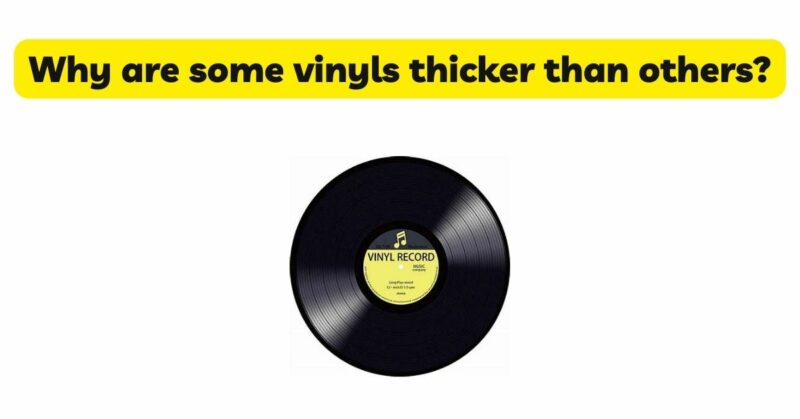Vinyl records have made a remarkable comeback in recent years, captivating music enthusiasts with their warm sound and tactile experience. When exploring vinyl collections, you may notice variations in record thickness, ranging from standard weight to heavier pressings. In this article, we will delve into the factors that contribute to the differences in vinyl record thickness. By examining manufacturing techniques, vinyl material composition, and market preferences, we aim to shed light on the reasons behind the varying thicknesses of vinyl records.
- Manufacturing Techniques: a) Pressing Time and Pressure: The manufacturing process of vinyl records involves pressing vinyl pellets or granules into a disc shape. The time and pressure applied during pressing can influence the thickness of the record. Longer pressing times and higher pressures tend to result in thinner records, while shorter times and lower pressures yield thicker records. b) Record Labels and Artistic Decisions: Record labels and artists may have specific preferences for the thickness of their vinyl releases. Thicker records are sometimes chosen for limited edition releases or special editions as a way to enhance the perceived value and uniqueness of the product.
- Vinyl Material Composition: a) Vinyl Compound: The composition of the vinyl compound used in record pressing can vary, affecting the density and weight of the resulting record. Different vinyl compounds, additives, and fillers can contribute to variations in thickness. b) Recycled Vinyl vs. Virgin Vinyl: Some records are pressed using recycled vinyl, while others use virgin vinyl. Recycled vinyl can be more prone to variations in thickness due to the inconsistencies in the recycled material. Virgin vinyl, on the other hand, is produced from new vinyl pellets, offering more control over the manufacturing process and potentially resulting in more consistent thickness.
- Record Market Preferences: a) Audiophile Pressings: Audiophile-grade vinyl records often prioritize sound quality and meticulous manufacturing processes. As a result, audiophile pressings may use thicker vinyl to enhance durability, reduce surface noise, and offer a superior listening experience. b) Collector’s Editions: Collector’s editions of vinyl records may feature thicker pressings as a way to provide a unique and exclusive product for dedicated fans. The increased thickness can contribute to a sense of prestige and collectability.
- Genre and Playing Time: a) Longer Playing Time: Records with longer playing times, such as double albums or albums with extended tracks, may require thicker pressings to accommodate the additional grooves and maintain sound quality throughout the entire playback. b) Heavy Music Genres: Some music genres, such as heavy metal or rock, often feature loud and dynamic recordings. Thicker records can better handle the dynamic range and high energy levels associated with these genres, reducing the risk of groove distortion and surface noise.
- Artistic Expression: a) Aesthetic Considerations: The thickness of vinyl records can also be influenced by aesthetic choices. Artists and record labels may opt for thicker records to create a visual impact, aligning with their artistic vision and overall packaging design.
Conclusion: The thickness of vinyl records is influenced by a combination of manufacturing techniques, vinyl material composition, market preferences, genre requirements, and artistic decisions. Factors such as pressing time and pressure, vinyl compound composition, market demands, and playing time can contribute to variations in thickness. Audiophile pressings and collector’s editions often prioritize thicker pressings to enhance sound quality or provide a unique product for enthusiasts. Regardless of the thickness, the overall enjoyment of vinyl records is ultimately shaped by the music itself, the playback equipment, and the listening environment. Embracing the diverse range of vinyl records, from standard weight to heavier pressings, allows for an enriching and varied vinyl experience.


